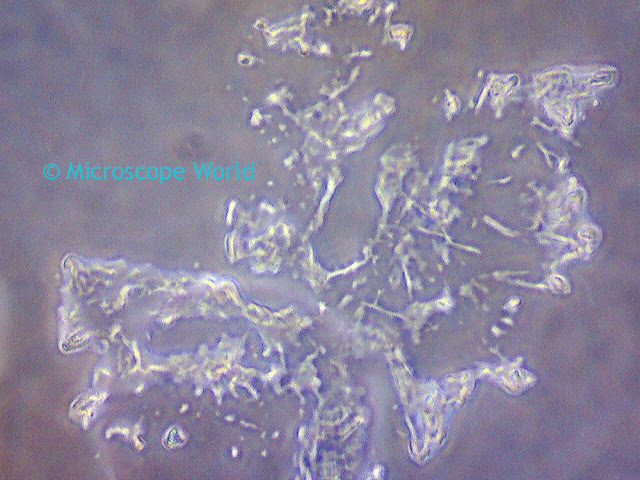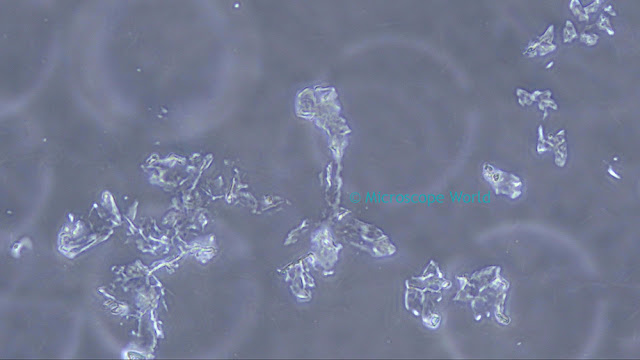The images below of human cheek cells were captured using a phase contrast microscope with a 40x phase lens and two different microscopy cameras. If you are unsure what phase contrast is, you can read about the process here.
The MoticamX is a 1.3 megapixel WiFi microscope camera. This microscope camera creates its own wireless network and allows live images from the microscope to be both viewed and captured on a tablet, phone or computer. The MoticamX is typically used in schools and sometimes in industrial settings. One limitation to this wireless camera is that the tablet or phone must be within line of site of the camera (no walls between the devices) and within 20-30 feet of the camera.
The MoticamX is a 1.3 megapixel WiFi microscope camera. This microscope camera creates its own wireless network and allows live images from the microscope to be both viewed and captured on a tablet, phone or computer. The MoticamX is typically used in schools and sometimes in industrial settings. One limitation to this wireless camera is that the tablet or phone must be within line of site of the camera (no walls between the devices) and within 20-30 feet of the camera.
 |
| MoticamX cheek cell image captured using phase contrast microscope at 400x. |
 |
| MoticamX cheek cell image captured using phase contrast microscope at 400x. |
 |
| MoticamX cheek cell image captured using phase contrast microscope at 400x. |
The HDCAM4 is a high definition HD microscope camera. The camera provides a high live frame rate of 60 frames per second at full HD resolution. Images can be captured at 2 megapixels. Images can be captured to a SD card or the camera can be hooked into a USB port on the computer and captured through the computer. The HDCAM4 is used in both Universities and industrial settings. The high quality image and fast frame rate make it a solid all-around camera for a wide variety of uses.
 |
| HDCAM4 cheek cell image captured using phase contrast microscope at 400x. |
 |
| HDCAM4 cheek cell image captured using phase contrast microscope at 400x. |
 |
| HDCAM4 cheek cell image captured using phase contrast microscope at 400x. |
All images were captured using the exact same microscope setup:
Contact Microscope World with questions about microscopy cameras, phase contrast or custom microscope solutions.

